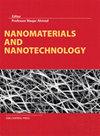酸性橙-7对球形纳米碳的吸收
IF 3.3
3区 材料科学
Q2 MATERIALS SCIENCE, MULTIDISCIPLINARY
引用次数: 3
摘要
酸性染料通常用于纺织品生产,如果在处理过程中没有得到适当处理,可能会对环境和人类健康产生中毒有害影响。从那时起,实现从工业化学废物中去除这些染料的新的高效低成本技术是绝对必要的。在这里,热带国家丰富的油棕榈叶被用作开发碳纳米球(吸附剂)的前体,以去除危险的酸性Orange-7(AO-7)染料(C16H11N2NaO4S)。通过改变其剂量(0.5、1、1.5、2和2.5 mg)、pH(酸性、天然和碱性)和初始AO-7浓度(10、15、20、25和30μM),研究了球形纳米碳的去除效果作为接触时间的函数。令人惊讶的是,油棕榈叶基碳纳米球去除酸性染料的效率高达99%。伪二阶动力学决定了吸附机理,Redlich–Peterson等温线模型与吸附结果非常吻合,回归系数接近1。这项研究表明,在全球需求的循环经济中,基于天然生物废物的碳纳米颗粒在可持续回收中的重要性。本文章由计算机程序翻译,如有差异,请以英文原文为准。
Acid Orange-7 uptake on spherical-shaped nanocarbons
Acid-dyes, typically used in textile productions, could infer poisoning harmful effects on the environment as well as on human health, if not properly treated during their disposal. Henceforth, there is an absolute necessity to achieve new efficient low-cost techniques to remove these dyes from industrial chemical waste. Here, the leaves of oil palm, which are abundant in tropical countries, were used as precursor in the development of carbon nanospheres (adsorbent) to remove hazardous acid Orange-7 (AO-7) dye (C16H11N2NaO4S). The removal efficacy of spherical-shaped nanocarbons was investigated as a function of contact period, by varying their dose (0.5, 1, 1.5, 2 and 2.5 mg), pH (acidic, native and basic), and initial AO-7 concentration (10, 15, 20, 25 and 30 μM). Amazingly, the oil palm leaves–based carbon nanospheres removed acid-dye up to an efficiency of about 99%. Pseudo second-order kinetics governs the adsorption mechanism and the Redlich–Peterson isotherm model fits well to the adsorption results, with regression co-efficient close to unity. This study suggests the importance of natural biowaste-based carbon nanoparticles in sustainable recycling, within the worldwide demanded circular economy.
求助全文
通过发布文献求助,成功后即可免费获取论文全文。
去求助
来源期刊

Nanomaterials and Nanotechnology
NANOSCIENCE & NANOTECHNOLOGY-MATERIALS SCIENCE, MULTIDISCIPLINARY
CiteScore
7.20
自引率
21.60%
发文量
13
审稿时长
15 weeks
期刊介绍:
Nanomaterials and Nanotechnology is a JCR ranked, peer-reviewed open access journal addressed to a cross-disciplinary readership including scientists, researchers and professionals in both academia and industry with an interest in nanoscience and nanotechnology. The scope comprises (but is not limited to) the fundamental aspects and applications of nanoscience and nanotechnology
 求助内容:
求助内容: 应助结果提醒方式:
应助结果提醒方式:


